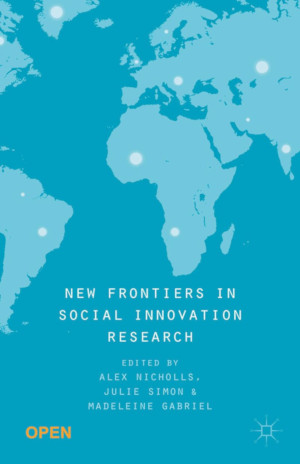Free Innovation
by Eric von Hippel
DescriptionTable of ContentsDetailsHashtagsReport an issue
Free innovation has both advantages and drawbacks. Because free innovators are self-rewarded by such factors as personal utility, learning, and fun, they often pioneer new areas before producers see commercial potential. At the same time, because they give away their innovations, free innovators generally have very little incentive to invest in diffusing what they create, which reduces the social value of their efforts.
The best solution, von Hippel and his colleagues argue, is a division of labor between free innovators and producers, enabling each to do what they do best. The result will be both increased producer profits and increased social welfare - a gain for all. 






Book Description
Free innovation is already widespread in national economies and is steadily increasing in both scale and scope. Today, tens of millions of consumers are collectively spending tens of billions of dollars annually on innovation development. However, because free innovations are developed during consumers' unpaid, discretionary time and are given away rather than sold, their collective impact and value have until very recently been hidden from view. This has caused researchers, governments, and firms to focus too much on the Schumpeterian idea of innovation as a producer-dominated activity.Free innovation has both advantages and drawbacks. Because free innovators are self-rewarded by such factors as personal utility, learning, and fun, they often pioneer new areas before producers see commercial potential. At the same time, because they give away their innovations, free innovators generally have very little incentive to invest in diffusing what they create, which reduces the social value of their efforts.
The best solution, von Hippel and his colleagues argue, is a division of labor between free innovators and producers, enabling each to do what they do best. The result will be both increased producer profits and increased social welfare - a gain for all.
This open book is licensed under a Creative Commons License (CC BY-NC-ND). You can download Free Innovation ebook for free in PDF format (4.1 MB).
Table of Contents
Chapter 1
Overview of Free Innovation
Chapter 2
Evidence for Free Innovation
Chapter 3
Viability Zones for Free Innovation
Chapter 4
Pioneering by Free Innovators
Chapter 5
Diffusion Shortfall in Free Innovation
Chapter 6
Division of Labor between Free Innovators and Producers
Chapter 7
Tightening the Loop between Free Innovators and Producers
Chapter 8
The Broad Scope of Free Innovation
Chapter 9
Personality Traits of Successful Free Innovators
Chapter 10
Preserving Free Innovators' Legal Rights
Chapter 11
Next Steps for Free Innovation Research and Practice
Appendix 1
Household Sector Innovation Questionnaire
Appendix 2
Modeling Free Innovation's Impacts on Markets and Welfare
Book Details
Title
Free Innovation
Publisher
MIT Press
Published
2016
Pages
242
Edition
1
Language
English
ISBN13 Digital
9780262035217
ISBN10 Digital
0262035219
PDF Size
4.1 MB
License

Related Books

Interest in social innovation continues to rise, from governments setting up social innovation 'labs' to large corporations developing social innovation strategies. Yet theory lags behind practice, and this hampers our ability to understand social innovation and make the most of its potential. This collection brings together work by leadi...

This free book tells the story of how Sweden is becoming a virtually cashless society. Its goal is to improve readers' understanding of what is driving this transition, and of the factors that are fostering and hampering it. In doing so, the book covers the role of central banks, political factors, needs for innovation, and the stakeholders in...

This book analyses intellectual property and innovation governance in the development of six key industries in India and China. These industries are reflective of the innovation and economic development of the two economies, or of vital importance to them: the IT Industry, the film industry, the pharmaceutical industry, plant varieties and food sec...

This open book aims to show which factors have been decisive in the rise of successful countries. Never before have so many people been so well off. However, prosperity is not a law of nature; it has to be worked for. A liberal economy stands at the forefront of this success - not as a political system, but as a set of economic rules promoting comp...

Universities and research institutes are increasingly expected to contribute to society by creating innovation from the returns of their research results and the establishment of new technologies. Toward that goal, Keio University in Japan held an international symposium titled "Fulfilling the Promise of Technology Transfer: Fostering Innovati...

This open access edited book captures the complexities and conflicts arising at the interface of intellectual property rights (IPR) and competition law. To do so, it discusses four specific themes: (a) policies governing functioning of standard setting organizations (SSOs), transparency and incentivising future innovation; (b) issue of royalties fo...

